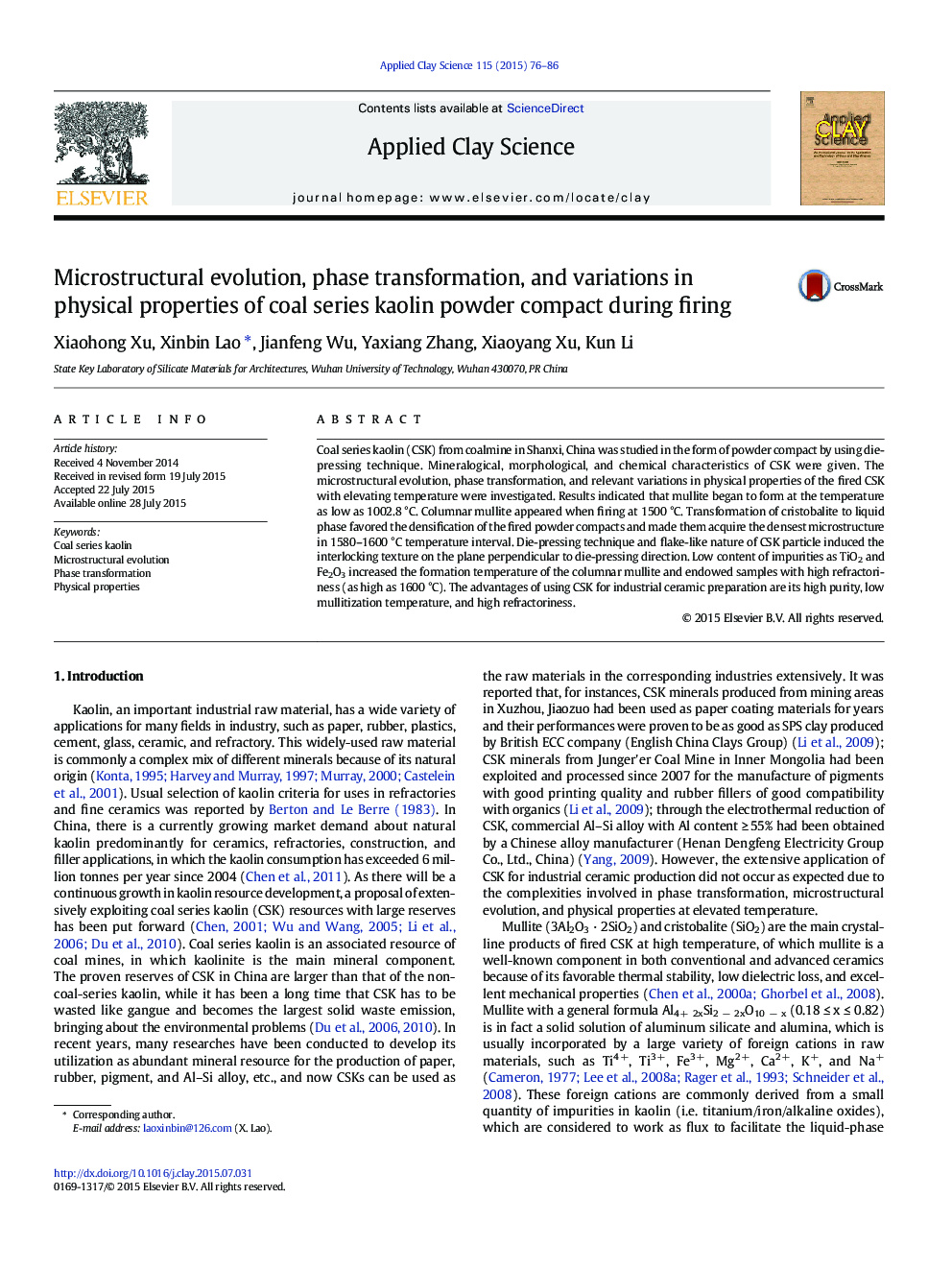| Article ID | Journal | Published Year | Pages | File Type |
|---|---|---|---|---|
| 1694321 | Applied Clay Science | 2015 | 11 Pages |
•Coal series kaolin (CSK) was first studied in the form of powder compact.•Microstructure evolution and phase transformation of the fired CSK were studied.•Low content of impurities endowed CSK products with high thermal tolerance.•Die-pressing technique and flake-like nature of CSK induced the interlocking texture.•The best preparation condition to obtain mullite-based ceramic from CSK was concluded.
Coal series kaolin (CSK) from coalmine in Shanxi, China was studied in the form of powder compact by using die-pressing technique. Mineralogical, morphological, and chemical characteristics of CSK were given. The microstructural evolution, phase transformation, and relevant variations in physical properties of the fired CSK with elevating temperature were investigated. Results indicated that mullite began to form at the temperature as low as 1002.8 °C. Columnar mullite appeared when firing at 1500 °C. Transformation of cristobalite to liquid phase favored the densification of the fired powder compacts and made them acquire the densest microstructure in 1580–1600 °C temperature interval. Die-pressing technique and flake-like nature of CSK particle induced the interlocking texture on the plane perpendicular to die-pressing direction. Low content of impurities as TiO2 and Fe2O3 increased the formation temperature of the columnar mullite and endowed samples with high refractoriness (as high as 1600 °C). The advantages of using CSK for industrial ceramic preparation are its high purity, low mullitization temperature, and high refractoriness.
